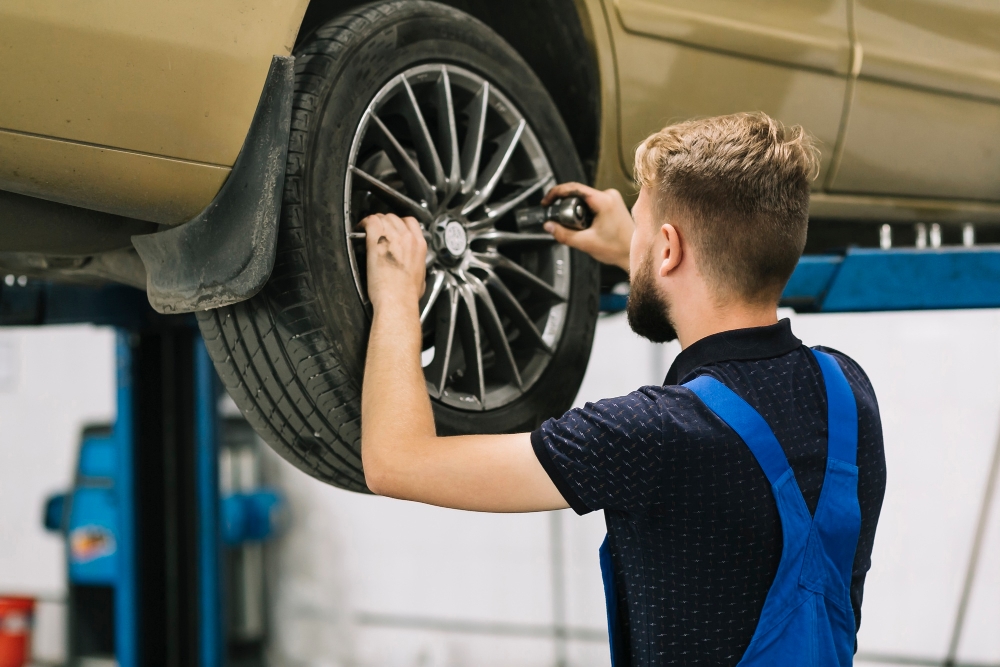Car maintenance is an essential part of a responsible driver’s daily routine, ensuring not only the longevity of the vehicle but also the safety of you and other road users. A regularly maintained car breaks down less often, consumes less fuel, and retains better performance. However, many drivers tend to postpone certain maintenance tasks until obvious signs of malfunction appear. Proper car maintenance involves more than just oil changes or tire checks—it includes the brake system, suspension inspection, battery condition, and many other important aspects.
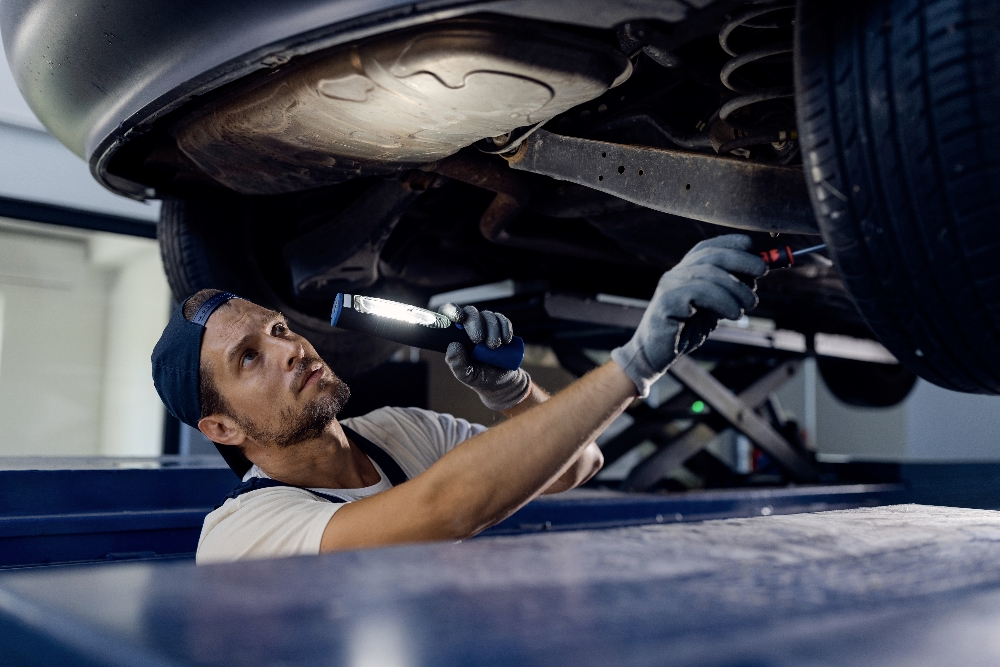
Suspension inspection: Why is it necessary?
The suspension is one of the most important parts of a vehicle, ensuring stability, comfort, and safety on the road. It consists of various components—shock absorbers, springs, joints, stabilizers, rods, and other parts—that work together to allow the car to drive smoothly. Timely suspension inspection helps prevent serious damage and ensures the vehicle lasts longer.
The most common signs of suspension issues include unusual noises (clunking, squeaking) when driving over bumps, the car pulling to one side, difficulty turning the steering wheel, or noticeable vibrations while driving. These symptoms indicate that suspension components may be worn or damaged. Ignoring such signs only worsens the problem—these components can affect other parts of the vehicle, such as the tires or steering system, making repairs more expensive and complex.
It is recommended to inspect the suspension at least once a year or every 15,000–20,000 km, especially after the winter season when road salt, potholes, and temperature fluctuations have the greatest impact on the suspension. It’s also wise to check the suspension before long trips to avoid unexpected breakdowns on the road.
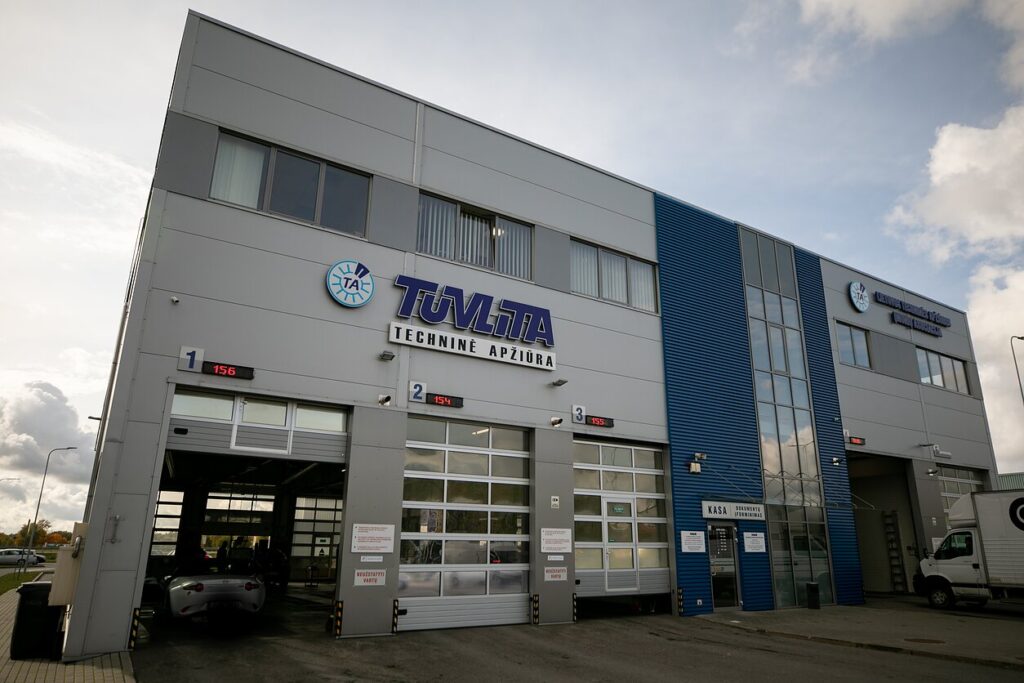
Repairs before technical inspection: How to prepare properly
The technical inspection (TI) is a mandatory procedure for every vehicle owner, ensuring that the vehicle is safe to operate and meets environmental standards. Unfortunately, many drivers face unpleasant situations where their car fails to meet the requirements and does not pass the inspection. To avoid stress, wasted time, and additional expenses, we recommend performing necessary repairs before the inspection—addressing potential issues in advance and ensuring the vehicle is in proper condition.
What should be checked before technical inspection?
First, it’s important to ensure that all lights are functioning—headlights, tail lights, brake lights, turn signals, and license plate illumination. A common reason for failing the inspection is burnt-out bulbs or improperly adjusted lights.
The next crucial step is the brake system. This includes checking the brake pedal travel, handbrake, brake discs, and pads. Uneven braking or an extended stopping distance can lead to a failed inspection.
The condition of the suspension is also very important. Shock absorbers, joints, rods, and stabilizers are all inspected—these components affect the vehicle’s stability and handling. Even minor looseness or noise can be flagged during inspection, so it’s best to address them in advance.
Additionally, the condition and tread depth of the tires should be evaluated—it must not be less than 1.6 mm. Emissions and exhaust levels are also checked, so it’s important to ensure the air filter, engine, and exhaust system are in good working order.
Why is it worth repairing in advance?
By performing repairs before the technical inspection, you avoid repeat inspection fees and wasting time in queues. Additionally, if faults are identified during the inspection, the vehicle may be deemed unsafe, which means not only a ban on using it but also additional costs and complications.
Take care of your vehicle’s condition in advance—visit our auto repair shop in Kaunas, Aukštieji Šančiai, and ensure your technical inspection goes smoothly the first time!

Headlight adjustment: why it matters and how to avoid mistakes
Properly adjusted headlights are not only about your comfort—they’re essential for the safety of other road users. Poorly aligned lights can blind oncoming drivers or, conversely, fail to illuminate the road adequately, significantly increasing the risk of accidents. Many drivers assume that if the lights are on, everything is fine, but the key is not just brightness—it’s the correct direction of the beam.
Headlight adjustment is especially important after certain repair work. For example, if you’ve replaced suspension parts, shock absorbers, or even tires, the vehicle’s height may change slightly, affecting the angle of the headlights. It’s even more critical if you’ve upgraded your lights—for instance, switching from halogen to LED or xenon bulbs. These lights are brighter, and improper adjustment can be dangerous for both you and others on the road.
During a technical inspection, headlights are one of the first things checked. Even a slight misalignment is a common reason why a vehicle fails the inspection. Inspectors check not only whether the lights are working but also whether the beam is aimed correctly—not too high or too low.
It’s recommended to check headlight alignment at least once a year, especially before the autumn-winter season when darkness and poor weather are daily challenges. After any major repair or traffic accident, it’s also wise to visit a service center for a check-up. Timely headlight adjustment ensures good visibility and contributes to safer driving.
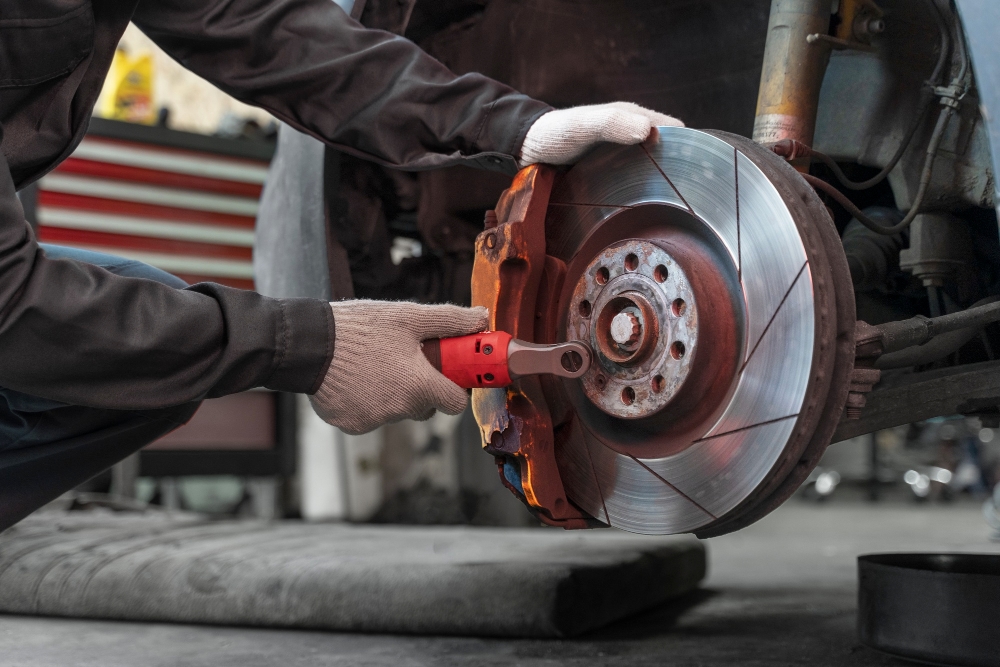
Brake system inspection and maintenance: when and why is it necessary?
The brake system is one of the most critical components of your vehicle, ensuring your safety on the road. Even minor faults can pose serious risks. That’s why brake inspections should be performed regularly—not just when you notice a problem.
Common signs that your brake system may be compromised include a longer stopping distance, unusual noises (squealing, grinding), brake pedal vibration, or a pedal that feels too soft or too hard. You should also pay attention if the vehicle pulls to one side while braking—this may indicate uneven brake performance.
It is recommended to inspect the brake system at least once a year or every 20,000 kilometers. A check-up is also essential before long trips or if you notice any changes in braking behavior.
Regular brake inspections can help prevent costly repairs. Timely replacement of brake pads protects the rotors, and a properly maintained brake fluid system ensures consistent braking performance.
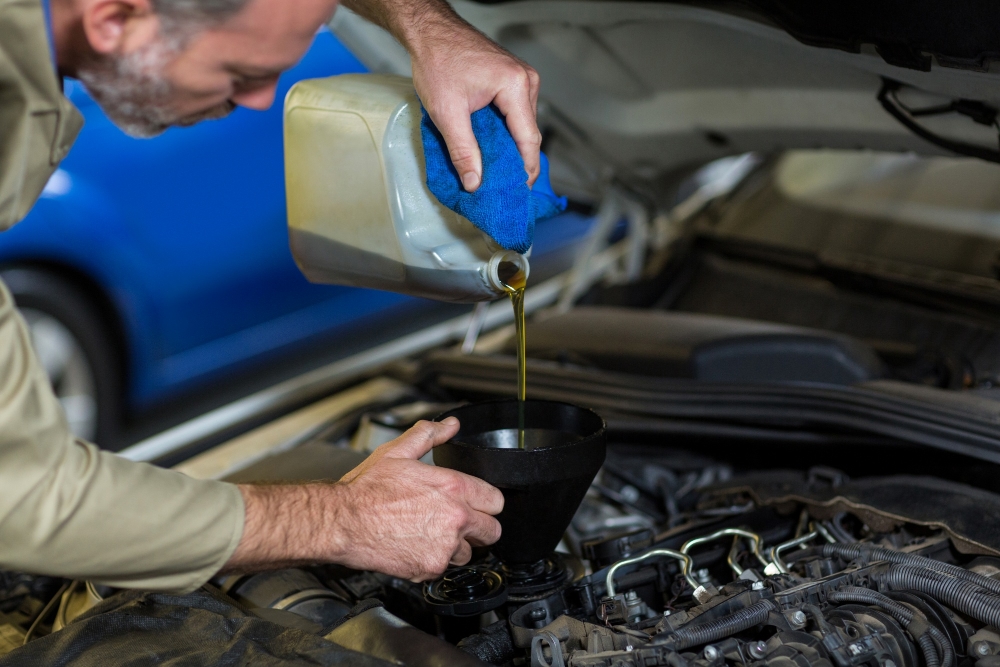
Oil and filter change: why it matters for your vehicle’s longevity?
Regularly changing your engine oil and filters is one of the simplest yet most important ways to ensure your vehicle’s longevity and smooth operation. Oil not only lubricates engine components but also reduces friction and helps cool the engine, preventing it from overheating. Over time, oil becomes contaminated and loses its properties, which increases engine wear.
Many drivers mistakenly believe that the oil change interval listed in the manufacturer’s manual is just a recommendation—but that’s a misconception. Typically, oil should be changed every 10,000 to 15,000 kilometers, depending on driving conditions and the type of oil used. More frequent changes are advisable if you often drive in urban areas, where the engine runs at lower temperatures and doesn’t reach optimal heat levels.
In addition to oil, the oil filter must also be replaced—it traps contaminants and protects the engine from dirt. It’s also worth checking the air filter, which ensures clean air enters the engine. A clogged air filter can increase fuel consumption.
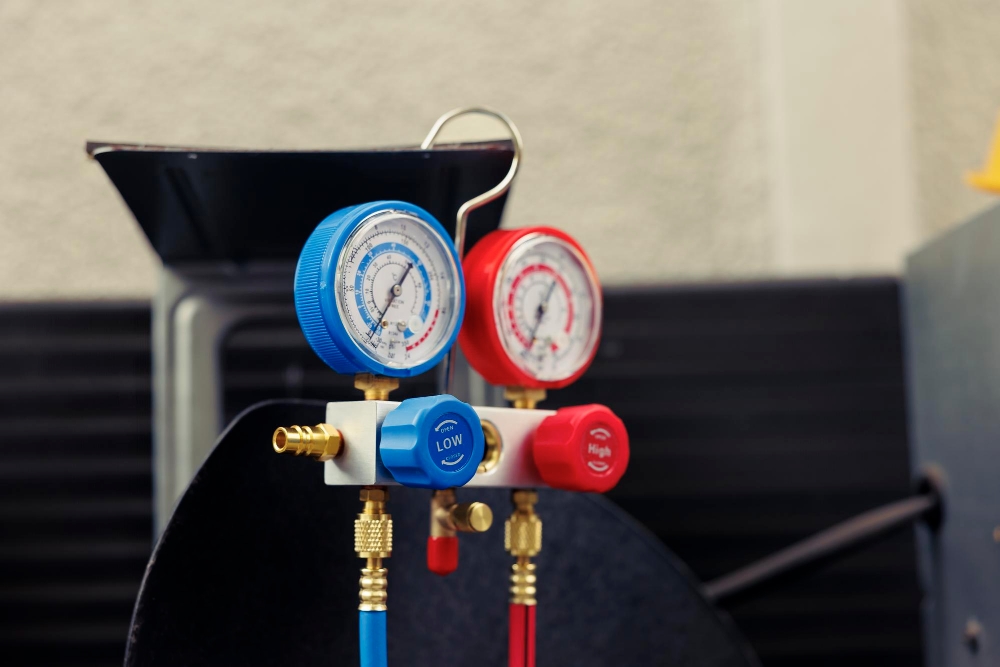
Air conditioning inspection and refill: when is it necessary and why is it important?
A car’s air conditioning system is not just a summer luxury—it’s a necessity that ensures comfort and safety. It not only cools the cabin on hot days but also helps clear foggy windows more quickly in rainy or cold weather. However, if the system is unused for long periods or poorly maintained, its performance can decline—airflow may weaken or the air may not cool effectively.
It’s recommended to inspect the air conditioning system at least once a year, ideally before the summer season. During the inspection, technicians check for leaks, assess the compressor’s performance, and ensure the fans are working properly. It’s also important to check and refill the refrigerant (freon), as low levels reduce cooling efficiency and can damage the compressor—one of the most expensive components in the system.
In addition to refilling, it’s worth replacing the cabin air filter and disinfecting the system—this helps eliminate bacteria and unpleasant odors.

Take care of your car with “Renvoja”
Looking for a reliable place to take care of your vehicle from A to Z? Our auto repair shop offers a wide range of services—from suspension inspection and brake system repair to oil and filter changes, air conditioning check and refill, headlight adjustment, and pre-inspection preparation. We’ll make sure your vehicle runs smoothly, remains safe, and stays dependable in all conditions.
Visit us at Alsėdžių str. 16a, LT-44474, Kaunas, and we’ll treat your car as if it were our own. Don’t wait—book your appointment today!




